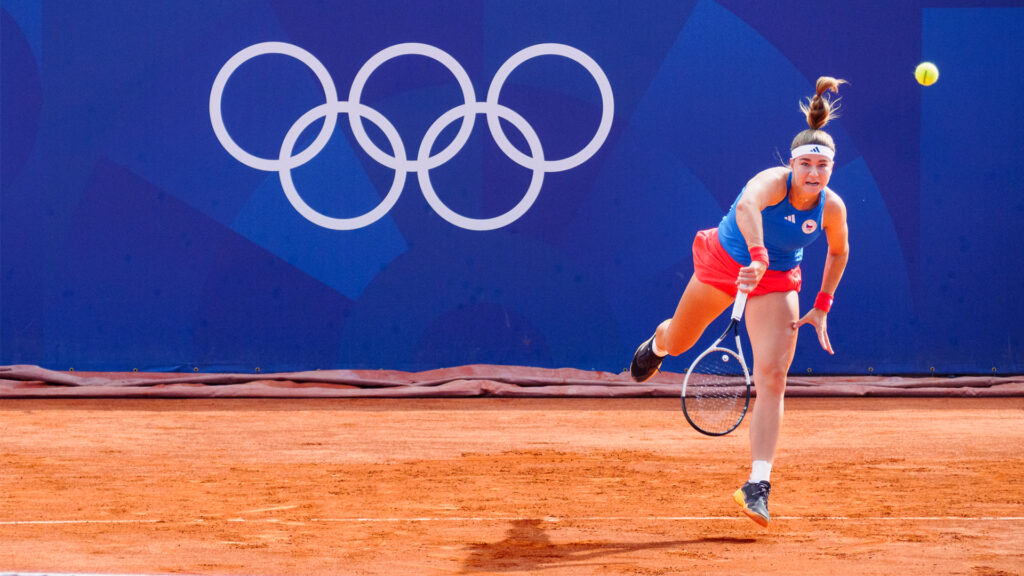By Jenna DiPaolo, Ocean Conservancy
Last week, storms across the South and Midwest suspended the PGA Tour’s Players Championship in Ponte Vedra Beach. The storms, which devastated communities across the region, are just the latest in a growing trend of extreme weather threatening to destroy the places where we live, work and play.
Few Floridians will soon forget the night in October 2024 when Hurricane Milton ripped apart large sections of the roof of the Tampa Bay Rays stadium, with winds estimated to have reached 120 mph.
But that wasn’t the first time extreme weather disrupted sports in Florida, and it won’t be the last. In 2022, storm surge from Hurricane Ian threatened Raymond James Stadium, home of the Tampa Bay Buccaneers, forcing the team to relocate key practices to Miami. And in 2020, Florida required school districts to begin monitoring students for signs of heat stress during sports practices and other outdoor activities. The law followed the tragic and preventable death of a 16-year-old football player who died from heat stroke during football practice three years earlier.

Climate change is no longer a distant threat – it’s impacting athletes and sports venues right now in Florida, across the U.S. and around the world. A study of all 30 NFL stadiums found they could face up to $11 billion in climate-related damages by 2050. Another study found that, by 2050, 60% of major cities worldwide will be too hot to host the Olympics in late July and early August. And it’s not just the athletes: Fans are suffering from heat stroke too.
From stadiums to practice fields, climate change is reshaping the places where we train, compete and play. That’s why Ocean Conservancy launched Protect Where We Play, an initiative rallying athletes, entertainers and fans across the country to safeguard these spaces from climate threats and raise awareness about the central yet overlooked role the ocean plays in keeping climate change in check.
In fact, without the ocean as a natural buffer, climate change would have already rendered our planet uninhabitable. Since the Industrial Revolution, it has absorbed more than 90% of the heat trapped by man-made greenhouse gasses, including carbon dioxide. But we can’t take the ocean for granted. Rising temperatures and extreme weather events are pushing our most important carbon sink to its limits.
That’s why Protect Where We Play is working to galvanize support for the ocean, the beating heart of our blue planet. And athletes in Florida and across the country are contributing their passion – and their sweat – to the cause.
Most recently, the third annual EcoAthletes Cup kicked off in early March, bringing together athletes from 29 universities across the United States – including Florida International and Florida State universities – to compete in amassing hours of exercise that will be converted into the planting of corals to restore the health of fragile coral reefs. This year’s challenge will culminate on Earth Day.

And we’re doing even more work here in Florida. In Miami from June 10-12, Protect Where We Play will be featured at the Green Sports Alliance Summit, one of the largest and most influential gatherings to promote sustainable innovation on fields and in studios. The theme of this year’s summit is “Game On 2030” – challenging leaders in sports and entertainment to take decisive action toward their 2030 sustainability targets.
But protecting where we play requires passion and energy from all of us — fans, professional athletes, weekend warriors and industry leaders alike. Everyone has a chance to join Team Ocean — which can mean taking part in beach cleanups, educating yourself and others about the ocean or taking part in local sustainability efforts.
Every other breath we take comes from the ocean — it keeps us alive, keeps our planet thriving and powers the moments we love most. Now it’s time to give back.
Join us to protect where we play.
Jenna DiPaolo joined Ocean Conservancy in 2024 as its chief brand and communications officer. She also leads the Protect Where We Play initiative. Banner photo: High winds and rain from Hurricane Milton destroyed the roof of Tropicana Field, home to the Tampa Bay Rays (Mark Rankin/U.S. Army Corps of Engineers, Jacksonville District, via Defense Visual Information Distribution Service).
Sign up for The Invading Sea newsletter by visiting here. To support The Invading Sea, click here to make a donation. If you are interested in submitting an opinion piece to The Invading Sea, email Editor Nathan Crabbe at ncrabbe@fau.edu.


